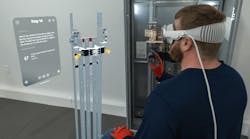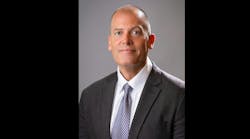Electrical Wholesaling has published a list of the largest electrical distributors since the 1970s. It's a time-tested measure of the fastest-growing distributors. In a business with at least 4,000 electrical distributors, to be ranked among the 250 largest in the land is truly an accomplishment.
Although this industry benchmark has appeared in the June issues over the years, the 2000 ranking will be in the September issue because of some problems that developed during our data-collection process. The magazine's editors apologize for the delay.
In the following pages, you will get an opportunity to learn more about some of the companies that have grown fastest over the past five years as measured by our 250 Biggest ranking. You will see some surprises. On any list of fast-growing electrical distributors, you probably expect to see companies like Sonepar, Rexel and Graybar. By any measure, these companies are among the fastest-growing distributors in the business, and we have thoroughly covered their progress and acquisitions over the years.
But not all of the companies that have grown quickly over the past few years are national chains, sprawling regional distributors, large international firms looking to grow in the United States, or distributors whose sales have grown primarily through acquisition. In our analysis of the past Top 250 listings, we found a number of companies that had annual growth rates over the last five years averaging 15 percent to well over 20 percent. We'll profile some of them in the following pages. It's an interesting mix of companies with great diversity in their approaches to business.
One might expect most of the electrical industry's fastest-growing distributors to be from regions of the country that have grown the fastest in the last few years. That's not the case. Although these fast-growing regions are represented in this group of distributors, just as many are represented from areas of the United States that haven't been known for explosive growth.
Learn how each of these companies has grown, and apply these lessons to your own firms to help steer through the choppy economic times many are experiencing.
RIVERSIDE SERVICE
When Mike Pratt moved his business from California's Orange county to Riverside county 17 years ago, he was at the crest of a wave of people moving east of Los Angeles.
Corona, Calif.
“Riverside and San Bernardino — those two counties became extremely high-growth areas because the homes were far cheaper than homes in Orange county and Los Angeles county,” said Pratt, president of American Electric Supply, Corona, Calif.
“The only problem was when they built all the homes, they didn't build support services. They didn't build the community centers, the post offices, the grocery stores, the schools,” he said.
Because of that, Pratt said the city needs to build support services for eight to 12 years just to catch up to the current population. American has around 30 schools on the books right now for the same reason. The distributor works primarily with contractors but does about 40 percent of its business with industrials and municipalities.
Despite the favorable business climate, Pratt knows that American Electric makes its own luck. His company is open 24 hours and has 18 trucks delivering all over southern California from five in the morning until 10 at night.
“As electrical wholesalers, everybody really only has one thing to sell, and that's their service.”
Besides making luck, American Electric makes custom-built panels in its UL-authorized in-house shop so it can turn them around in days, as opposed to the weeks it can take to get them from manufacturers.
American also runs a unique return goods authorization (RGA) department that does “clean-offs” at contractors' job sites. Then, they credit contractors for materials that are still good.
Pratt said service sets his company apart from other distributors. But smarts have played a role, too. American Electric no longer keeps paperwork on file. Pratt said everything is scanned in and shredded, and all the paperwork is kept on disc, opening up an entire warehouse of space.
BEACON OF OPPORTUNITIES
In a market where growth is constant, a distributor must also grow in market share. Baldur Schindler, president of Beacon Electric Supply, San Diego, has been grabbing more of his growing market by diversifying his company and cashing in on unique opportunities.
San Diego
Being in the commercial construction business has paid off in a market where the population grows by 60,000 to 70,000 per year.
“We've got all kinds of Indian casinos (being built),” Schindler said. “They've operated with some substantial budgets, and we've been fortunate in getting more than our fair share of those.”
Beacon opened a data/telecom division that Schindler said has been “towing its own” so far. The company also has fully functional switchgear and lighting departments.
The IMARK distributor has also been involved in the suddenly lucrative power market. The combination of biomedical firms moving into the area and a power crisis has created a lot of nervousness over reliable power, so Beacon is starting to meet those needs and looking to expand that business as more companies seek that kind of security.
“Some of these firms, where they have critical experiments, they cannot be without power for very long or they lose refrigeration and they lose experiments. A couple of those guys have paid significant premium prices to get emergency power onsite within two or three weeks,” Schindler said.
Schindler said he sees power co-generation as one of Beacon's more promising future opportunities. Those systems, he said, are now being built into new construction more often. This, he added, is a lot more profitable for him than normal construction jobs.
Having the services to attract clients and the flexibility to react to different opportunities has kept Beacon ahead of its competition in the land of plenty. “Our market has been red hot, that's for sure … If there is a slowing economy, we sure haven't seen it.”
PROSPERING THROUGH DIVERSIFICATION
Benfield Electric Supply Co. Inc., White Plains, N.Y., grew its sales from $44.6 million in '96 to $81 million in 2000 by continued diversification, said Roy Kohli, chief executive officer. The company began its diversification efforts back in the late '70s by developing an international division for business overseas and a control systems division.
White Plains, N.Y.
In the mid '90s Benfield Electric Supply saw a need to diversify again when area plants closed and its Westchester county market area became saturated. “Things were getting a little thin, so we decided to diversify our company even further from its traditional electrical wholesale base,” said Kohli.
Benfield did that by entering the datacom market with its start of a datacom division, by entering the lighting market with its purchasing of Speclite, Hicksville, N.Y., and by establishing a power systems division. A move into the five burrows of New York City with its purchase of Central Electrical Supply Corp. in the spring of '98 has also helped them grow.
Kohli said Benfield Electric Supply will sustain its growth through continued expansion and by growing the business in its new marketplace of New York City. But, just as New York City offers opportunities, it also presents challenges. The high cost of doing business there is probably the company's biggest challenge. “New York is one of the biggest markets in the country,” said Kohli. “But it's also the most expensive.”
INNOVATIVE THINKING
Bob Compagna, CLS president and chief executive officer, says that CLS, Hartford, Conn., typically tries to double its sales every four years. Looking at the last 10 years, the company has been good to its word. Sales in '91 were $23 million; sales in 2000 were $145 million.
Hartford, Conn.
“All our growth is internal and geographic,” said Compagna. “You can certainly grow your business quickly through acquisition, but we have not acquired anybody in the last 10 years.”
Compagna also credits marketing and innovative thinking for the company's growth. With a million-dollar-plus marketing budget and a five-person marketing team, CLS sponsors a variety of events, promotions, shows and golf tournaments. “I think marketing is an area that a lot of distributors don't invest a lot of time and energy on,” said Compagna. “We spend an awful lot of time on marketing. In addition to that, I think you have to be innovative.”
One forward-thinking move CLS has made is its formal councils with customers. Twelve times a year, customers meet and talk with CLS about ways to run the business better. Compagna said that CLS also conducts a lot of written surveys with customers.
Another inventive move CLS made recently was to implement Sunday hours. For a distributor that caters to commercial business and has no residential showrooms, that's fairly unheard of. “It is not necessarily going to get us a lot of business, but it does say, ‘Hey, listen. The home centers are seven days a week. Let's stop crying and complaining about it, and let's start fighting them on their terms.’”
Compagna said he thought CLS would be able to continue to meet its goal of doubling sales every four years. “I guess at some point the law of big numbers kicks in — where it gets tougher to reproduce. But, so far, we've been able to do it,” said Compagna.
NORDSTROM VS. KMART
“We're more like a Nordstrom than a Kmart,” said Steve Bellwoar, president of Colonial Electric Supply Co., King of Prussia, Pa., as he spoke of challenges to sustaining the company's escalating sales — from $34.5 million in 1996 to $70 million in 2000.
King of Prussia, Pa.
“Our biggest challenge will be finding markets that provide the type of returns that we'll need because of the way that we go to market,” Bellwoar said. “We have a lot of value in our people, in our technical abilities, in our logistics. Our challenge will be picking and choosing the proper segments to focus on so we can get the return we need to operate the business in the high-service manner that we like to operate it.”
Colonial Electric doubled its sales over the last five years by moving into new product markets with existing customers and by adding locations and salespeople. “We've been growing lighting, data and switchgear business,” said Bellwoar. With eight locations, Colonial Electric has both opened new locations and acquired. Most recently, Colonial opened a second location in King of Prussia — its central distribution center, which is key to the company's growth vision. Bellwoar believes that the centralized warehouse will enable the company to more efficiently service its customers.
Continued growth will come from acquisition. “This is a very fragmented area, and there are a lot of smaller companies for sale. We think there is a lot of opportunity by bringing them under our centralized processing umbrella.”
DYNAMITE DECADE
When Craig Levering, president and chief executive officer of Crawford Electric Supply Co. (CESCO), Dallas, purchased the company in 1990, it had six employees and $2 million in annual sales. Today the company's facility encompasses 45,000 square feet with 65 employees and 2000 sales at $62 million. In August, Crawford Electric will add another 15,000 square feet to accommodate expected growth.
Levering's first few years at Crawford Electric weren't nearly as bright. Catering to small and medium electrical contractors, Levering said it was extremely difficult to survive in the beginning because the company lacked manufacturer lines. Over time every line the company requested became available. Sales really began to explode in 1993 when CESCO bought a Stuart C. Irby in Dallas. At the same time Square D, Palatine, Ill., granted Crawford Electric its switchgear line.
Dallas
Since then, Levering attributes Crawford Electric's continued success to its outstanding team. “It's just an outstanding group of people that we've put together, and they're getting the job done,” said Levering. He said Crawford Electric will sustain this growth in the future by retaining and attracting the best. “I think we have a culture that is dedicated to success, and I believe that every person is focused toward that goal.”
Challenges that may hamper Crawford Electric's goals include the big conglomerates. Levering worries about the big contractors and distributors getting bigger and bigger, but he said that Crawford Electric is prepared to face this challenge by moving quicker and changing at a moments notice. “It all comes down to relationships, and that's not going to change. It's the relationships that we have with our customers that give us the advantage.”
LIGHTING UP NATIONWIDE
With three acquisitions and one start-up, E. Sam Jones Distributor Inc., Atlanta, has lit up four new locations across the United States since 1995. The lighting distributor acquired Frank's Lighting, Houston, in 1995; it acquired a division of Arizona Wholesale in Phoenix in 1997; and in 1998 the lighting distributor both opened a start-up in Los Angeles and acquired Chicago's Superior Lighting. The specialty distributor also has a branch in Nashville.
Atlanta
“As small as we are, that was pretty aggressive,” said Patrick Jones, E. Sam Jones' president. “We swallowed a lot. Now we are ready to grow each of them — we're looking for them to grow 20 percent to 25 percent a year,” Jones said.
Unlike many specialty lighting distributors, E. Sam Jones is not heavily into contractor/construction business. Instead it services commercial properties — chains, local property management companies, hospitals, hotels, and some government and utility customers.
“Our people wake up in the morning thinking of selling lamps, ballasts and fixtures,” said Jones. The company plays very heavily on energy savings. The company's retrofit business has been good, but they're still waiting to see what impact the California Energy Crisis will have on business. Obviously, the distributor is already positioned to take advantage of California repercussions.
The distributor plans to continue its growth spurt through continued expansions via acquisitions, start-ups or by merging or partnering with another player. Jones said the biggest challenge will be finding quality employees as the company continues to grow. “We're still very people oriented,” Jones said. “I'm proud of my people and what we've built, and we're going to take it to the next level.”
MULTIPLYING MARKETS
Electric Supply of Tampa Inc., Tampa, Fla., more than doubled its sales over the last five years — from $23.4 million in 1996 to $47 million in 2000. The folks at Electric Supply of Tampa didn't do it by acquisition or opening branches; instead they've been adding markets and growing market share from one location.
Tampa, Fla.
With one location, 13 trucks, $3.5 million in inventory and 84 employees, the distributorship has transformed itself from a company catering to contractors and one utility customer to a company with only about 55 percent contractor customers. In the last five years Electric Supply of Tampa Inc. broadened its customer base by creating three new sales teams: datacom, international and utility.
“For years, one of our largest customers has always been a utility, but we did very little utility business beyond that,” said George Adams Jr., president and chief executive officer. “In '96 we established a utility team, and we have certainly added customers there.”
The company's international and datacom teams, both founded a couple of years ago, also fueled growth. “The International Group had a very strong year last year,” said Adams. “That division was responsible for a significant portion of 2000's growth.”
Although the datacommunication division also contributed, its growth hasn't been as explosive. “We underestimated some of the barriers to entering that market,” Adams said. “It (datacom sales growth) was much slower than we anticipated.”
Continuing the company's incredible sales growth will be a bit of a challenge over the next few years. Although the area's economy is still robust, Adams said there are fewer projects coming out of the ground in the next six to 12 months. “Talking to engineers and architects, I hear that they are not at an out-of-control pace like a year ago,” said Adams. “Last year, they were turning work away even with good customers. That's not the case today.
“This year we will be fortunate to have a flat year, but beyond that we want to grow,” said Adams. “But planning growth is the easy part; implementing it is sometimes rough.”
MOTIVATED PEOPLE
“Our goal is to grow at least 15 percent a year,” said Bill Elliott, president of Elliott Electric Supply, Nacogdoches, Texas. “We've pretty much done that every year.” Indeed, from 1996 to 2000, the company went from $70 million in sales to $133 million in sales.
Nacogdoches, Texas
“It's just a matter of having aggressive people and looking for opportunities to expand coverage and to do more business with a larger group of customers,” said Elliott. Certainly, Elliott has expanded coverage. Last year the distributor opened four new locations. They're building two new locations and three new facilities this year.
The biggest challenge confronting the distributor is finding good people to hire. “It's been difficult for some time,” said Elliott. “We are seeing some easing of that now.” He said that some of the larger chains in his area have downsized because of the economy. “The independents are a little more pragmatic and more willing to look at the long-term,” said Elliott. “We see this kind of economy as an opportunity to gain market share.”
Elliott believes that the company's goal to grow at least 15 percent a year is sustainable well into the future. “It's just a question of whether we continue to have motivated people.”
VALUE-ADDED DISTRIBUTION
For OneSource Distributors Inc., San Diego, the most value-added component of the business is its employees.
“We try and get the best people we can, the right attitudes, the right smarts. And then we look at that group every year and we consistently try and upgrade from the group that we already have,” said Bob Zamarripa, president.
San Diego
Constantly improving the business has made OneSource extremely valuable to its clients.
“Our customers kept talking about distributors being disintermediated. But our customers kept asking us for more stuff. And it really didn't have anything to do with product, it had to do with services. We kept thinking, if our customers keep asking us to do more things … How are they going to get rid of us?”
OneSource's upgrades have included their own UL-authorized panel manufacturing, extensive customer training, and storeroom management. Zamarripa said the storeroom management function not only adds value for customers, it ensures OneSource will move more products. “We try and go in and straighten up their storerooms. We take over the electrical supply portion of it. We bar code their inventory and hook it into our system. It's kind of an automatic replenishment system to OneSource. It's really sole-sourced. If they do it, they've got to kind of commit to us.”
Zamarripa said OneSource has a highly technological sales force, a great market to work with, and a highly efficient, hub-and-spoke business model. But he still maintains that the key to staying ahead of the game is becoming endlessly valuable to customers.
“The better we communicate our value-added services to our customers, the more successful we'll be. If we can communicate that and implement those services, we'll have strong growth.”
As far as upcoming challenges to his company, Zamarripa said competition was not a major concern, but access to capital was tough in today's market. The only notable obstacle he pointed to was one that affects his entire southern California market. “We're running out of electrons going through the wires. That's a big challenge.”
GROWING CONSTRUCTION
Walt Reynolds, president of The Reynolds Co., Dallas, joked that last year about killed him. With 2000 sales up $18 million over 1999, it's obvious the folks at The Reynolds Co. have been working hard. Sales mushroomed more than $50 million over the last five years — from about $57 million in 1996 to $107 million in 2000.
Dallas
What accounts for this huge growth? Most notably, the company expanded its construction division. Until about five years ago, The Reynolds Co. made most of its money by catering to industrial customers. Today about 60 percent of the company's revenue comes from its construction/contractor division.
Reynolds said that after a couple of flat years on the industrial side of business in 1998 and 1999, both construction and industrial business grew in 2000. Last year also brought expansion into another market with a new branch in Houston.
What will the future hold? “We've budgeted for significant growth in 2001,” said Reynolds. “However, year-to-date we're tracking pretty much what we did last year. We're looking for that to pick up some the second half of the year. We're banking on our industrial business to grow significantly across the state to pick up some of the pace that the contractor division has done for the last five or six years.”
Reynolds said future growth would come from geographic expansion. “We will be much more in an acquisition mode than in a start-up mode.”
STORE BY STORE
In 1995, Warshauer Electric Supply Co. had one store and approximately $16 million in sales. Since then, the regional electrical distributor has opened a store every other year, bringing the number of locations up to four.
“We have a pretty good foothold on most of the state of New Jersey,” said Jim Dunn, vice president of sales. “Now what we're wanting to do is manage that growth — focus on the inner workings of the company, keeping our quality people, managing our inventory, managing our deliveries and making sure that all the things we do are done properly.” Although the company will currently focus on its inner workings, Dunn said they are also looking to expand into a couple of other areas in New Jersey in the future.
Tinton Falls, N.J.
One of the challenges the company currently faces is finding an e-commerce solution. “We didn't jump in and spend money to have an e-commerce solution 18 months ago when the world predicted that we needed to,” said Dunn. “We don't think brick and mortar will ever go away, but we need to be able to offer e-commerce as a convenience to our existing customer base. That's going to be a challenge. That's something a central distribution center does better because it provides a point where all the orders can come into.” Warshauer Electric's four separate 20,000-plus-square-foot locations make e-commerce a bit more of a challenge. Still, the company is working on a possible e-commerce solution by the fourth quarter of 2001.
Finding quality people is also a challenge. Dunn said that opening their newest branch in Parsippany, N.J., last year drove that point home. “Since we're not growing by acquisition, we're not acquiring people,” said Dunn. “We have to go out and find them.”
THE LONG HAUL
Mostly involved in the contractor business, Walters Wholesale Electric Co., Signal Hill, Calif., has been doing well thanks to California's irrepressible growth in construction.
Signal Hill, Calif.
But being tied to the growth of its own customers means Walters must always count on the success of those customers. So, it has taken the approach of being partially responsible for customer success.
“We try to really understand the net income statement of a contractor, and what it takes to improve that net income,” said Bill Durkee, president of Walters. “And if we can help improve that net income, why would they not buy from us?”
Durkee cited the company's investment in a distribution center as a way to help customers' bottom lines. He said his employees emphasize dependable service and keeping customers' costs down.
“One of the things was to invest in a distribution center, which was a huge investment for us — and a big risk. This created confidence on their part that we could support them with good fill rates, with good accuracy and on-time (delivery). That's what a contractor cares for,” said Durkee.
To gain the respect of contractors and develop those relationships, Walters has invested in the largest outside sales force in southern California. Durkee took advantage of the number of talented manufacturing and warehouse people “dumped on the marketplace” in the early '90s as manufacturers left California.
Durkee said that he seeks strong relationships with vendors, customers and his own employees. “Our philosophy is to keep those three groups motivated and to spend as much time as we can physically in front of those three types of people.”
Walters is continually probing those relationships in hopes of finding opportunities to expand further. It already has separate telecom, energy management and residential lighting operations.
“We really feel that to be a successful wholesaler, we have to have an extremely long-term outlook of our relationships with employees, with customers and with vendors. It's the shortcut that kills you.”
BASES LOADED
“The electrical distribution business … isn't about hitting grand slam home runs,” said Tom Isenberg, president, Western Extralite, Kansas City, Mo. “It's about hitting singles everyday, and that take a lot of discipline.”
Kansas City, Mo.
Isenberg credits that sort of discipline from employees with his company's growth — from $37.5 million in sales in 1996 to $65 million in 2000. “We work hard,” said Isenberg.
He also credits the company's move to a larger building with the last five years' rapid sales growth. The 60-year-old company's headquarters had been in the same building for 25 years. “It was just too small by a mile,” said Isenberg. With the move, the third-generation family-owned distributorship more than doubled its office space and tripled its Kansas City warehouse space — from about 25,000 square feet to 75,000 square feet.
The solid local economy has also helped, but Isenberg says that it gets more and more difficult to sustain such big growth spurts. “As you get bigger, it gets harder to grow because the market is only so big,” said Isenberg. “It looks like the economy is slowing down, and there are a lot of competitive pressures out there.”
In the last five years two competitors have moved into the Kansas City area: French Gerleman Electric Co., with headquarters in the St. Louis area, and Stanion Wholesale Electric Co., headquartered in Pratt, Kan.
But Western Extralite has been moving into additional markets, too. The addition of a service center in St. Louis in 1999 and one in Leavenworth, Kan., brings its total up to 12.
THE FASTEST-GROWING DISTRIBUTORS
In our analysis of the past Top 250 listings, we found a number of companies that had annual growth rates over the last five years averaging 15 percent to well over 20 percent. We'll profile those listed below in the following pages.
American Electric Supply Inc., Corona, Calif.
Beacon Electric Supply, San Diego
Benfield Electric Supply Co. Inc., White Plains, N.Y.
CLS, Hartford, Conn.
Colonial Electric Supply Co. Inc., King of Prussia, Pa.
Crawford Electric Supply Co. Inc. (CESCO), Dallas
E. Sam Jones Distributor Inc., Atlanta
Electric Supply of Tampa Inc., Tampa, Fla.
Elliott Electric Supply, Nacogdoches, Texas
OneSource Distributors Inc., San Diego
The Reynolds Co., Dallas
Walters Wholesale Electric Co., Signal Hill, Calif.
Warshauer Electric Supply Co., Tinton Falls, N.J.
Western Extralite Co., Kansas City, Mo.








